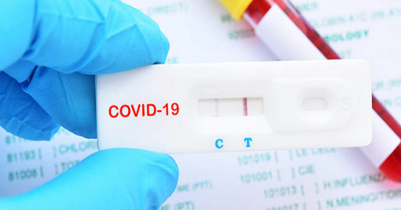Eye News Desk
People burn fat at different rates during exercise

Researchers have found that the optimal heart rate for fat burning varies for each person and frequently does not correspond with the 'fat burning zone' on commercial exercise machines.
The researchers suggested that clinical exercise testing, a diagnostic procedure that assesses a person's physiological response to exercise, might be a better resource for assisting people in achieving their intended fat loss goals.
Nutrition, Metabolism and Cardiovascular Disease published the study's findings online today. It took a machine learning-based modelling approach. “People with a goal of weight or fat loss may be interested in exercising at the intensity which allows for the maximal rate of fat burning. Most commercial exercise machines offer a ‘fat-burning zone’ option, depending upon age, sex, and heart rate,” says lead author Hannah Kittrell, MS, RD, CDN, a PhD candidate at Icahn Mount Sinai in the Augmented Intelligence in Medicine and Science laboratory.
“However, the typically recommended fat-burning zone has not been validated, thus individuals may be exercising at intensities that are not aligned with their personalised weight loss goals,” added Kittrell, who is also director of the Mount Sinai Physiolab, a clinical body composition and exercise physiology laboratory at Mount Sinai Morningside.
The findings of a recent study by a team of sports nutritionists suggested that females who are fit and healthy tend to burn more fat when they exercise, in comparison to men
The heart rate and exercise intensity at which the body burns fat at its highest rate during aerobic exercise are sometimes referred to as FATmax. This intensity may be of interest to those looking to maximise fat loss during workouts since fat is now a significant source of energy.
In the study, the heart rate at FATmax, as determined by a clinical exercise test, was compared to predicted heart rates at various percentages of maximal effort within the generally advised "fat-burning zone."
The researchers found that the measured and predicted heart rates in a sample of 26 people did not agree well, with a mean difference of 23 beats per minute between the two measurements. This implies that general guidelines for a "fat-burning zone" might not offer reliable advice.
The next phase of research will examine whether people who follow a more individualised exercise plan lose more weight and fat and improve metabolic health markers that indicate the likelihood of developing conditions like type 2 diabetes, obesity, and heart disease.
“We hope that this work will inspire more individuals and trainers to utilize clinical exercise testing to prescribe personalized exercise routines tailored to fat loss. It also emphasizes the role that data-driven approaches can have toward precision exercise,” said senior author Girish Nadkarni, MD, MPH, Irene and Arthur M Fishberg professor of Medicine at Icahn Mount Sinai, director of The Charles Bronfman Institute of Personalised Medicine and system chief, Division of Data-Driven and Digital Medicine, Department of Medicine.
The paper is titled “Discrepancy between predicted and measured exercise intensity for eliciting the maximal rate of lipid oxidation.”
Read More
- Control high blood pressure in summer
- Treatments for Constipation in Children
- Benefits of eating watermelon at Iftar
- Harmful aspects of standing to urinate
- These 5 home remedies will remove the smell of sweat
- Exercise more effective than medicines to manage mental health?
- Nutritionist recommends avoiding these 5 common breakfast mistake
- Which is the best country for `Hair Transplant`?
- Bangladesh reports 17 more Covid-19 cases
- Maintaining health in the golden years






























